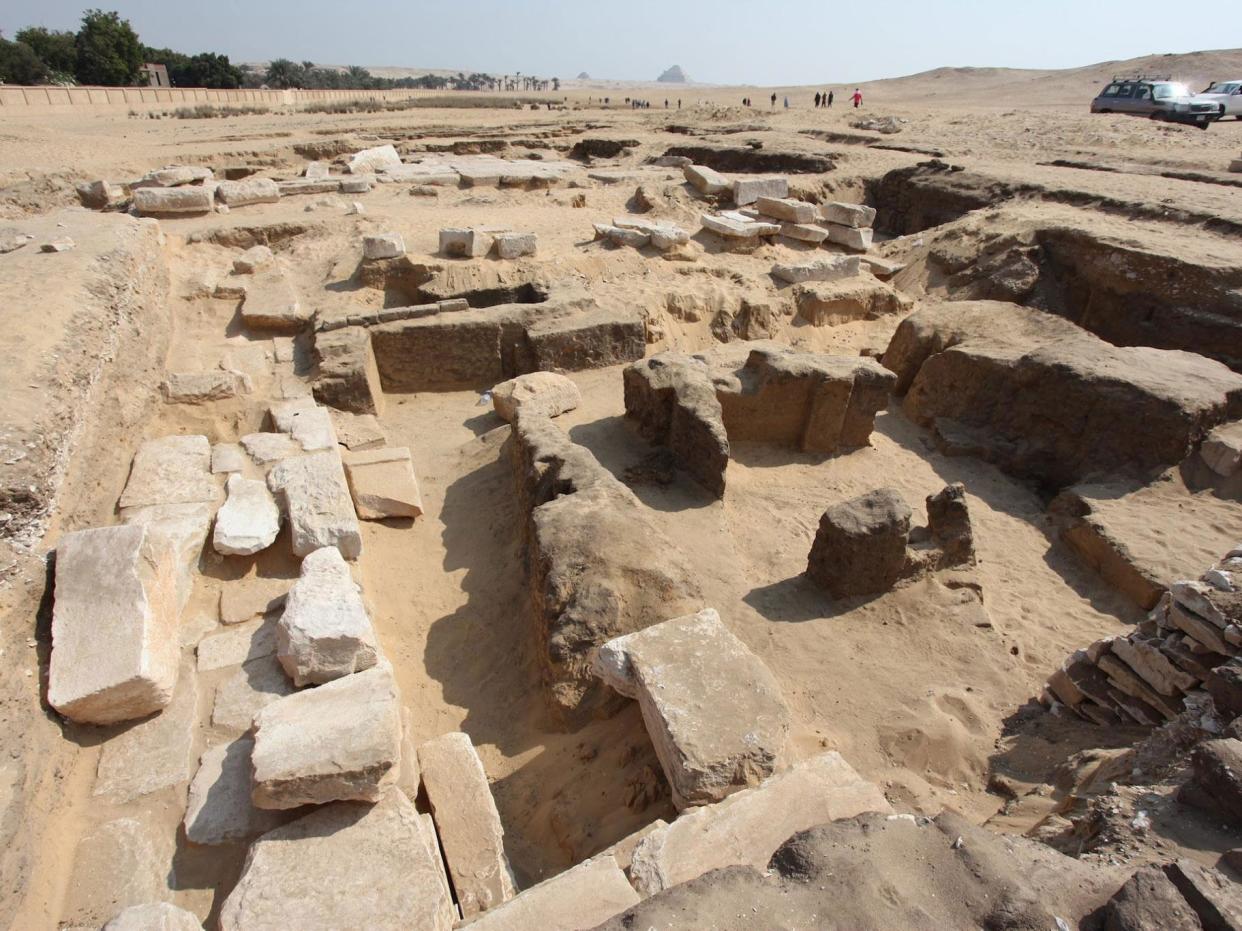Lost Egyptian Pharaoh tomb dating back 3,200 years discovered near Cairo

An ancient temple belonging to King Ramses II has been discovered on the outskirts of Cairo.
Archaeologists hope the find could shed light on the life of the 19th Dynasty pharaoh, who ruled over 3,200 years ago.
The find was made by an Egyptian-Czech mission in the village of Abusir near the step pyramid of Saqqara.
The temple is the only evidence of the presence of Ramses II in the Badrashin area in Giza, south of central Cairo, according to Dr Miroslav Barta, the head of the Czech team.
Built on mud-brick foundations it is 32 metres long and 51 meters wide, with a large forecourt, according to Dr Mohammed Meguahed, deputy head of the mission.
There is also a “pillars hall”, parts of which are painted blue, he added.
The temple’s remains were said to be covered in sand and chippings, which are believed to have been fragments of the reliefs which adorned the walls, a common feature of many significant ancient Egyptian structures.
Analysis of the reliefs confirmed the continued worship of the sun god ‘Ra’ in Abusir, which started in the 5th Dynasty, over 4,500 years ago, according to Dr Barta.
It is believed the temple was built between 1213 and 1279 BC.
Ramses II, also known as Ramses the Great, is one of the most well-known of all ancient Egypt’s rulers and was reputed to have fathered 160 children.
He was highly regarded for his military victories and expanded ancient Egyptian influence into the Levant.
Earlier this year, a giant restored statue of Ramses II was unveiled in Luxor. When the 11-meter object was discovered in the 1950s, it was in 57 pieces.

 Yahoo News
Yahoo News 
